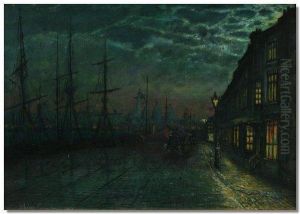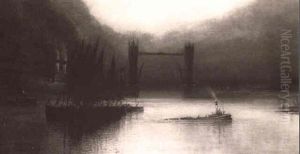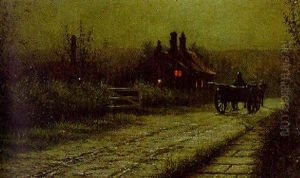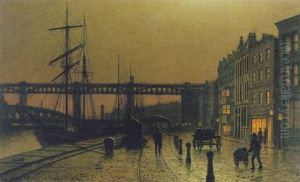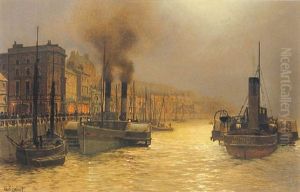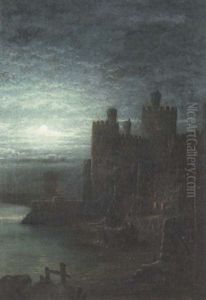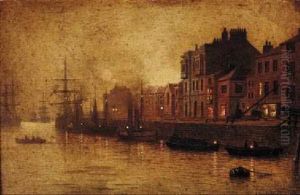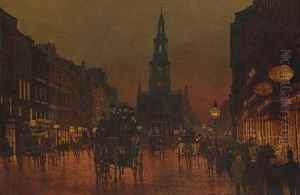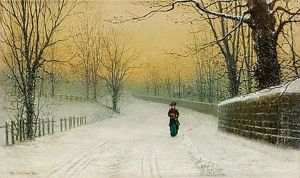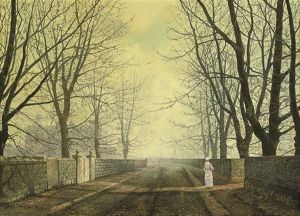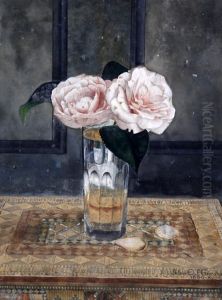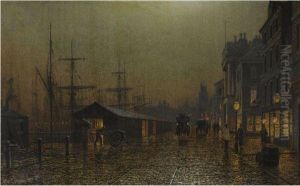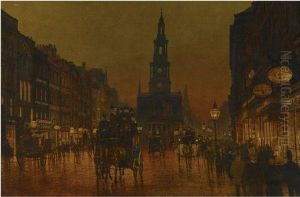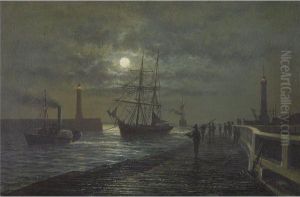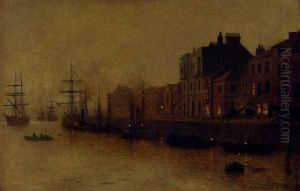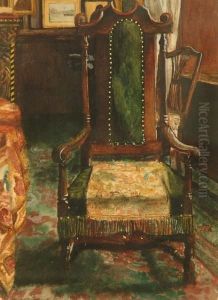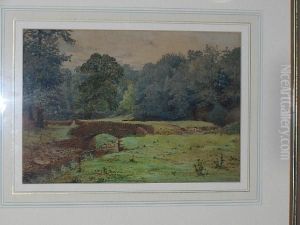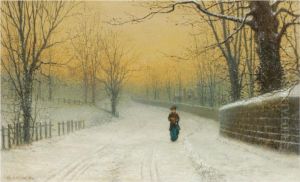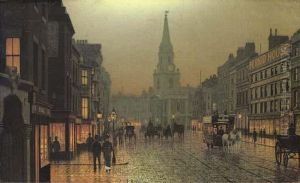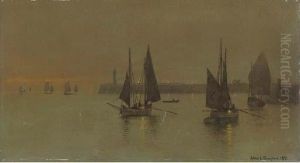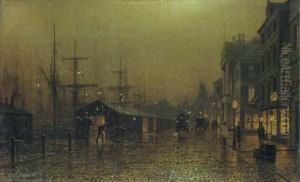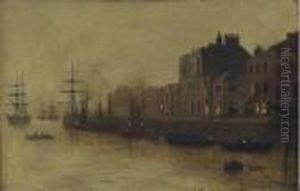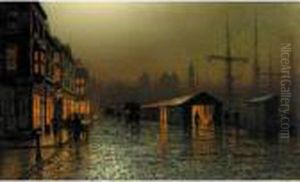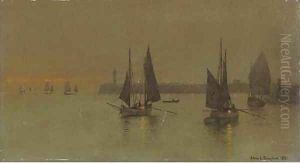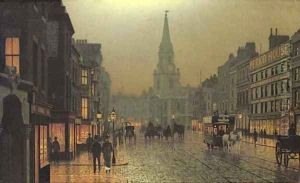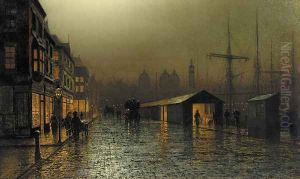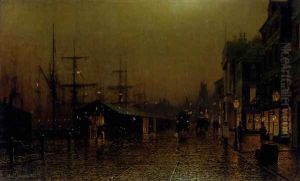Arthur E. Grimshaw Paintings
Arthur E. Grimshaw was a British painter known primarily for his nocturnal scenes of urban landscapes, which often featured evocative lighting and a haunting atmosphere. Born in 1868, Grimshaw was the son of John Atkinson Grimshaw, who was also a renowned painter, famous for his moonlit cityscapes and landscapes. Following in his father's footsteps, Arthur developed a distinctive style that focused on the play of light and shadow, particularly in evening settings.
During his career, Arthur E. Grimshaw did not achieve the same level of fame as his father, but he was a respected artist in his own right. His works often depicted the streets of cities like London and Leeds at night, illuminated by the glow of gaslights or the moon. He was adept at capturing the wet cobblestone streets and the moody ambiance of Victorian and Edwardian England.
Grimshaw's paintings are characterized by a meticulous attention to detail and a rich palette of colors that reflect the various tones and hues of the night. He often painted scenes that were empty of people, which helped to create a sense of stillness and quietude, in contrast to the bustling life that would inhabit those spaces during the day.
Arthur E. Grimshaw's artistic output was not as prolific as that of his father, and his works were less frequently exhibited. Nonetheless, they have garnered appreciation over time, with collectors and enthusiasts of Victorian art recognizing the quality and uniqueness of his nocturnal scenes. Grimshaw's paintings now hang in various art galleries and private collections, appreciated for their atmospheric quality and their depiction of a bygone era.
Arthur E. Grimshaw passed away in 1913, leaving behind a modest but compelling body of work that continues to captivate audiences with its serene and contemplative portrayal of nighttime landscapes.
